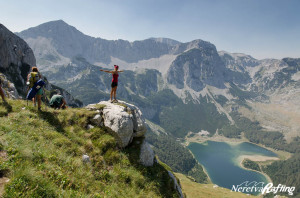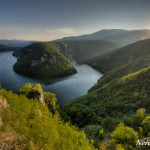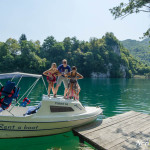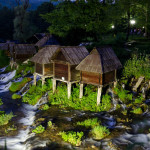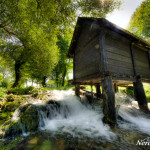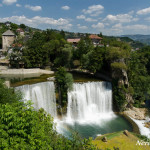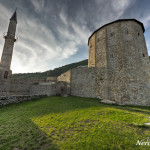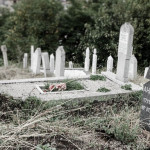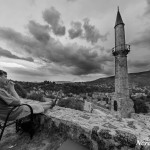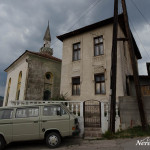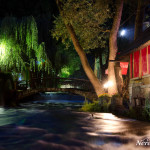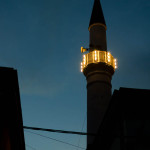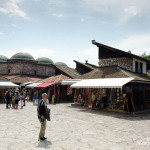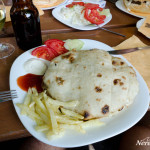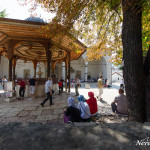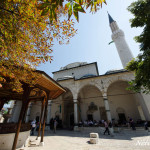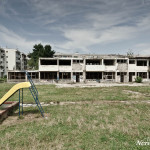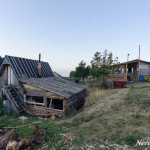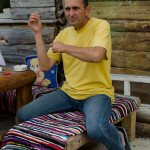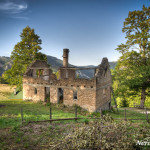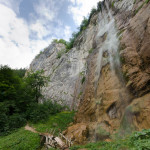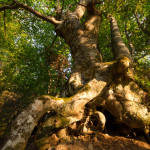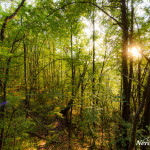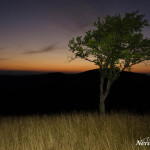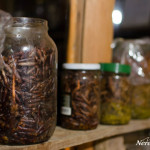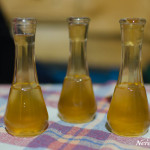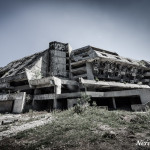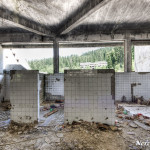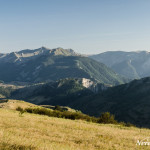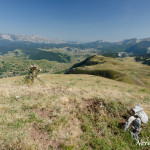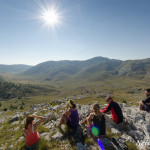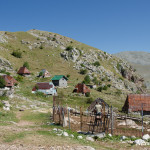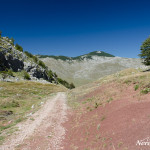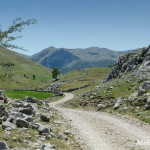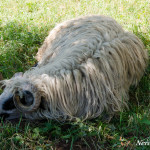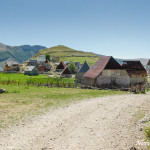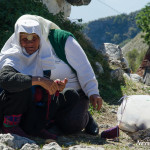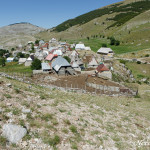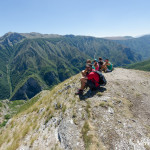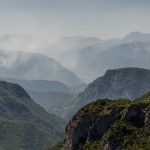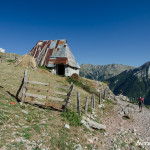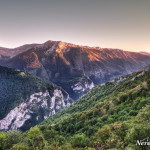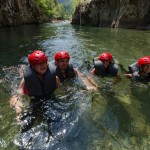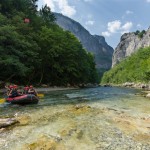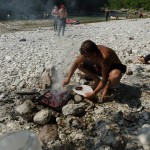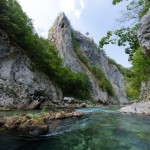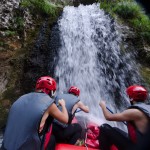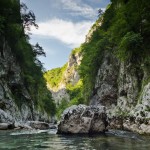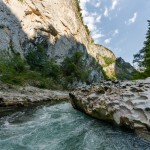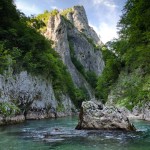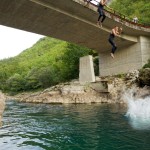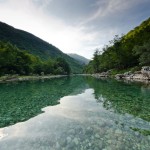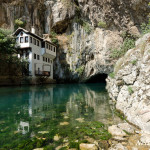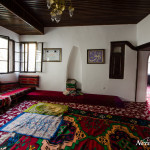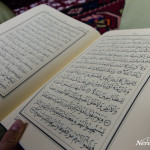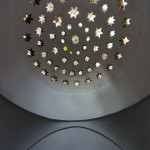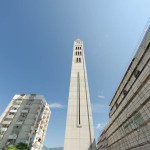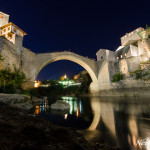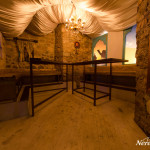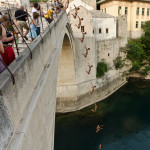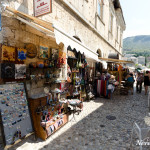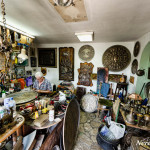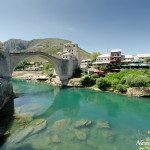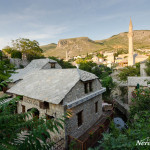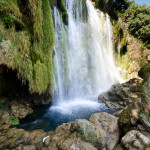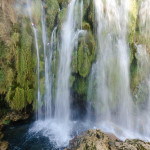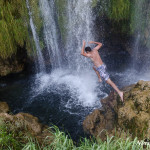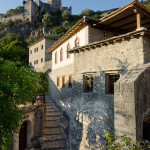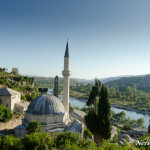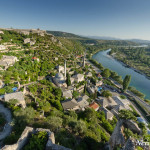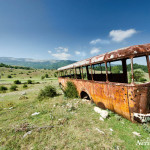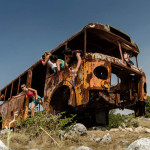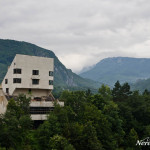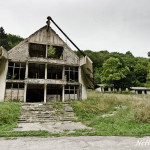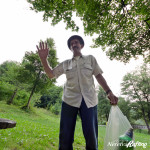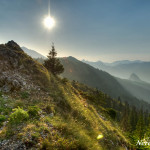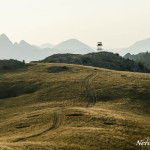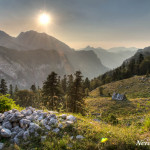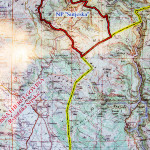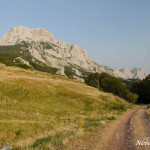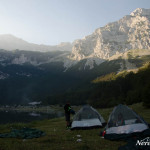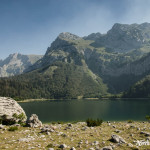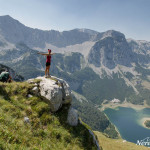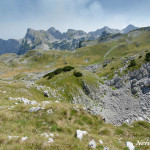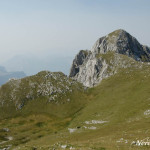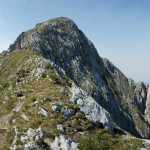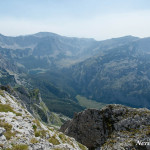Many people asked us for recommendations of what to do in Bosnia and Herzegovina, where to go, what to see, etc.
Unlike anyone else, we will not present you the list of main attractions but a comprehensive plan for an unforgettable Bosnia trip. Of course, you will not miss the major attractions as they were also included; however, they are incorporated into a unique travel guide, which is designed by nature-oriented travellers from the Czech Republic, who drew from their own experience from the trips to Bosnia and Herzegovina.
Therefore, I am asking you, why would you search for individual attractions when you can conveniently copy the entire travel
plan?
What to take with you on this Bosnian trip
- a car
- a tent and a sleeping bag
- hiking shoes
- hiking poles recommended
Our preferences
We wanted to do a lot – to hike, to raft and to enjoy. Therefore, we focused primarily on adventure rather than sightseeing. And we wanted that cheap.
Map
- Download zipped KML file
- Download zipped GPX file
- Download KML file with only Main points
- Download GPX file with only Main points
Day by day plan
Day 1: early mornig arrival to Jajce
We started our trip by leaving the Czech Republic in the evening and driving whole night. We crossed the borders to Bosnia at around 6 a.m. and continued the road through Banja Luka to Jajce. The road is one curve after another along a river carved in a rock valley, sometimes with a small tunnel, so drivers will really enjoy this. You can take nice pictures on this road.
Jajce is a lovely small town with a rich history (also listed in UNESCO), great waterfall and a nice lake. Definitely one of the most beautiful towns in Bosnia and Herzegovina (for us it’s just after Sarajevo and Mostar). We arrived Jajce at around 8 a.m. and first drove to the lake. A perfect spot to take a nap after a sleepless night in a car. After a small breakfast on the pier, we asked a guy if we can rent a small boat. So he rented us a nice battery powered boat. We used it to get closer to the water mills so we didn’t have to follow the road.
We spent afternoon walking through Jajce and then left to Sarajevo where we camped.
What to do & enjoy in Jajce
- Rent a boat and take a ride on the lake.
- See small water mills.
- Explore a fortress ruins.
- See a city waterfall.
If you have more time
- Stay in the Plivsko jezero campsite.
- You can stop in Travnik (between Jajce and Sarajevo) for a visit of a pretty big fortress.
Day 2: Sarajevo
If you arrive in the evening as we did, a normal camp like Autocamp Oaza can save some marks (KM = convertible mark is the currency of Bosnia and Hercegovina). The camp is located in Ilidža (western part of the city) – see the map above. There’re also some cottages where you can stay. Anyway, you don’t have too many choices since there are only few campsites in Sarajevo.
What to do & enjoy in Sarajevo
The capital of Bosnia and Herzegovina has quite a lot to offer. You can spend a whole day in the city and still not be bored. But personally, I think that it is not worth it to spend two days of your trip on sightseeing in Sarajevo. Instead, you could:
- Explore the old town
- Get a map of the old town and take a tram which will take you there from Ilidža.
- Enjoy a busy day life or a vibrant night life (clubs and bars Hacienda, Sloga and many more).
- Taste the best muslim/Bosnian “Ćevapi” and drink some tap beer in a catholic/Croatian pub across the street.
- Learn about the devastating war conflict (1992–1995)
- You can get the most comprehensive information about the war conflict in the Tunnel Museum. The museum is located near the airport because this tunnel was dug under the airport and was the only source of supplies in Sarajevo’s isolation during the war. To find it without GPS, it is better to be prepared that you might spend a couple of hours trying to find the museum. At least we spend an hour finding it and had to pay some money to the guy who took us there.
- Because the war wasn’t that long ago, you can still see its marks on many buildings in the city.
- Hike in the surrounding mountains
- Sarajevo hosted Winter Olympic Games in1984, so there are plenty of opportunities to hike (more about this later).
If you enjoy exploring cities and partying late at nights, then you would probably like to spend 1.5 days in Sarajevo and keep this schedule. Or if you don’t want to party, you can spend in Sarajevo’s centre just half a day and go to Skakavac in the afternoon (as described in Day 3). You’ll save 1 day from this plan and still visit the Tunnel Museum after returning from Skakavac (as described in Day 4).
Day 3: Sarajevo and Skakavac
Ok, so you spent half a day in Sarajevo. What next? Let’s go for a small hike just beneath a big waterfall Skakavac near Sarajevo and dont’ forget your sleeping bag!
The best time for us to leave Sarajevo was after lunch.
Trip to Skakavac – how to get there
- Drive north of Sarajevo through Nahorevo and leave your car near the turn to the left, where the road starts getting worse (marked in the Google map above).
- Take a sleeping bag (tent’s not necessary) and follow the road uphill to Dragan’s guesthouse. It’s a modest cottage but Dragan, the Serbian owner, is a great cook and can offer you a bed or at least a roof above your heads and a toilet. Plus, he makes his own pine and honey rakia – delicious! (Rakia = traditional spirit drink consumed in the entire Balkans). He’ll gladly sell you a couple of bottles. Leave your sleeping bags here.
- Make a round-trip to Skakavac waterfall. You may follow signposts along the road or you may simply ask Dragan, who will show you the way. It may take you approx. 3 hours.
- Enjoy a tasty dinner at Dragan’s cottage.
Day 4: Bjelašnica – arrival to Umoljani
Today’s program is to get from Dragan’s place above Sarajevo to Umoljani (and take a small hike there). Once you get to the car, and you haven’t been to the Tunnel Museum yet, now it is probably good time to do so.
On the way to Umoljani, you’ll pass a big ski jump and ruins of a bombarded military building.
You can spend the afternoon hiking in Umolanji. We, for example, looked at a nearby hill north of the village and said: “Ok, let’s go there!” It took us maybe 3 hours to go up and down, but the view was totally worth it. If you are afraid of stepping on a mine, don’t be. They were not deployed that far in the mountains. This is what locals say. Moreover, the landscape is mainly
rocky with short grass, so you can see where you put down your feet.
Day 5: Bjelašnica – day trip to Lukomir
A whole day trip to Lukomir belongs among the top hikes in Bosnia. We took a longer NW road there and a shorter SE path back.
The village of Lukomir (1495 m) is the highest altitude and most remote village in Bosnia and Herzegovina. During the winter season, fallen snow isolates the village from the rest of the world. It is only a couple of years ago that they started using electricity there. Lukomir is known for its traditional way of life. You may buy there handmade socks and other wool stuff. There’s also a pub with local cheese specialties.
Lukomir lies on a ridge of the deep Rakitnica canyon which drops 800 m below. On the way back to Umoljani, there will be opportunities to look down this magnificent valley.
Day 6: Rafting on Neretva
Of course, here comes the unforgettable rafting experience. First you have to get from Bjelašnica to Konjic. The rafting usually starts at 9:00 but it’s possible to come even later if you ask Sanel.
I remember Sanel telling us:
“There will be 4 adrenaline parts“.
After the first white water part, we asked him:
“So 3 more to go?”.
“No,” he replied, “that wasn’t adrenaline yet.” When we finally got to the aforementioned parts, we had to paddle really hard. After that, Sanel said that “sometimes, one raft daily flips here.”
But thanks to Sanel (and our effort) we had no troubles in the rapids but an amazing experience instead. Well, 99.9% of rafts don’t flip here, so there’s no need to worry.
And if 4 adrenaline parts is too little for you, you may also jump from high rocks (or bridges) to the deep waters of Neretva.
Around noon, we stopped at a place where Rakitnica river flows into Neretva river. Sanel made a fire and prepared a barbecue for us. After half an hour, we were enjoying his grilled sausages in a pita bread with vegetables.
So all in all, it was probably the best day of our Bosnian trip.
- Neretva river is so clean that you can drink right from it.
- Neretva river is so much fun! 🙂
- Paddling upstream to get that picture.
- Barbecue time!
- Waterfall
- Waterfall time!
- One of the highest jump opportunities on Neretva.
Day 7: Vrelo Bune and Mostar
If you would like to spend yet another day or more in mountains around Konjic, you might like hiking in Prenj / Visočica mountains, swimming in and camping at Boračko lake, etc. They both lie SE of Konjic up the Neretva river.
We, however, travelled on day 7 to Mostar.
As you will be getting closer to Mostar, which is by the sea, you will notice a rise in temperature and drier land. So it’s nice to
cool down by swimming in a very long clean dam that regulates Neretva river flow to Mostar. The swimming spot is marked in the map. It’s under the bridge so not many tourists notice it (but locals know this place).
Before you visit the old town of Mostar, I can really recommend you to stop at Vrelo Bune and Blagaj tekke. It’s a place where the river Buna rises from a cave in a rock. You can order a boat that will take you into the cave to the very source of Buna river. You can visit an interesting monastery of Blagaj Tekke. It’s a religious place for Sufi brotherhood (islamic based, Persian influenced). When you get hungry, go to a restaurant right on the river whe you can get a freshly caught trout from the Buna river. Such sensational. Besides, the trout doesn’t cost much. Perfect.
What about an accommodation? There are a couple of comfortable camps in the area between Mostar and Vrelo Bune.
Mostar after dark has got its charm. It’s pointless describing it’s sights here because you can read it anywhere else. But here comes a valuable hint: park your car in front of a big church with a skyscaper-high tower. It’s near the Mostar old town, free and more secured than other parking lots. You can see it from a long distance plus it is marked in the map.
Day 8: Mostar, Kravice waterfalls and sea
What to do in Mostar:
- watch professionals jumping from the old bridge (don’t do it by yourself!)
- visit a musem of the bridge
- walk the cobblestone streets and buy some souvenirs
On your way to Kravice waterfalls, you’ll pass a medieval town Počitelj with a nice castle ruin and steep cobblestone streets. It was bombed in the war but mostly repaired after. It’s worth the stop.
After that, let’s go to Kravice waterfalls. An amazing waterfalls that’ll cool you down. The waterfalls are marked on the map. It will be a lot of people around the waterfalls but the waterfalls itself aren’t crowded. You can easily spend there half a day.
We ended this day with driving to the Croatian sea and finding a camp at a long sandy beach. The beach is a great spot for kitesurfing. If you’re not into sea relaxing or want to shrink the trip for one day, you could join this day’s plan with the next day’s one.
Day 9: Under Maglić
Today’s task is to get under the highest mountain of Bosnia and Herzegovina – Bosanski Maglić (2386 m).
Head back to Mostar and turn direction Gacko. Beware that you’ll enter the land of special administrative entity Republika Srpska (yes, you’ll still be in Bosna and Herzegovina). Republika Srpska has it’s own alphabet (Cyrillic like in Serbia) but even it’s own government and police. And the police checks much more strict and frequent than the Bosnian. So turn on your lights and don’t speed or a fine won’t miss you.
Maglić lies in the oldest Bosnian national park Sutjeska. You will also see a couple of abandoned monuments of the Yugoslavian era. When you arrive to Tjentište and it’s too late, you can find a hotel with campsite. I don’t know how the hotel is but the campsite is’t not that good. This village hasn’t much else to offer, maybe just a tiny grocery with pretty limited supplies and a very often closed petrol station. Ok, there is the biggest outdoor swimming pool in the Balkans but in the time we were there it was empty. Prominent people from whole Yugoslavia used to spend holidays in Tjentište, but those days are long gone. On the other hand, I’ve seen recent pictures with people enjoying the pool, so you might swim there after all.
What’s important is to find a road under Maglić:
- In Tjentište behind the petrol station, turn to the right on a dirt road. It’s a rough dirt road leading to a parking place under Maglič. It’s not steep but pretty rugged so your car should better have high chassis. We managed it with regular Chrysler van with a full load (6 people) but it wasn’t surely the best for the car. It’s not far but the drive will take you an hour. I don’t recommend you to drive there after rain if you don’t have a 4WD.
- After approx 10 km / 1 h of a careful drive, you’ll reach the first (obvious) junction. Turn right. Then, it’s just a short way to the parking place right under Maglić.
Leave your car there, take your tent and all you need for sleeping on the hike. Follow a marked way to Trnovačko jezero – a heart-shaped lake with the elevation of 1517 m. Thanks to a flat surface, it is a suitable spot for building your tents. Moreover, you will find a stream of fresh water nearby.
Day 10: The summit of Maglić
The summit of Maglić has an elevation of 2386 m above sea level. Which makes 650 m difference from the lake, so quite an easy trek if you walk without a tent and a heavy backpack. You’ve got 2 choices:
- Leave your tent at Trnovačko jezero lake, climb to Maglić and easily descend the same way. Then you can camp there for another night or go back to your car the same way you came there.
- Carry your tent and all equipment to Maglić and descend a quite difficult way straight to your car. The descend is steep, roughly marked but it’s the fastest way to your car. If you opt for this shortcut, please be careful because you will be carrying a heavy load on your back. I wouldn’t recommend it in case of fog or after rain.
Also, be sure that you carry enough water with you, because there will not be any source of fresh water along the track.
Once you get back to your car and to Tjentiště, I think that the best thing to do is to drive to Foča, where it will be easier to find a more comfy accommodation for you after such a demanding trip. I can recommend Motel Brioni (marked in the map) which lies a bit aside of Foča at a beautiful place right between two small rivers. You can get cheap cottages for bigger groups of people and there’s also a good restaurant.
Day 11: driving home
Here we go, driving back home! To be honest, I still can’t believe how much we managed to see, do and enjoy. It always feels that the trip must have taken more than 10 days.
I hope that you found this plan useful. Feel free to share it with your friends 🙂
 Author:
Author:
Tomas Kouba (Google+)
